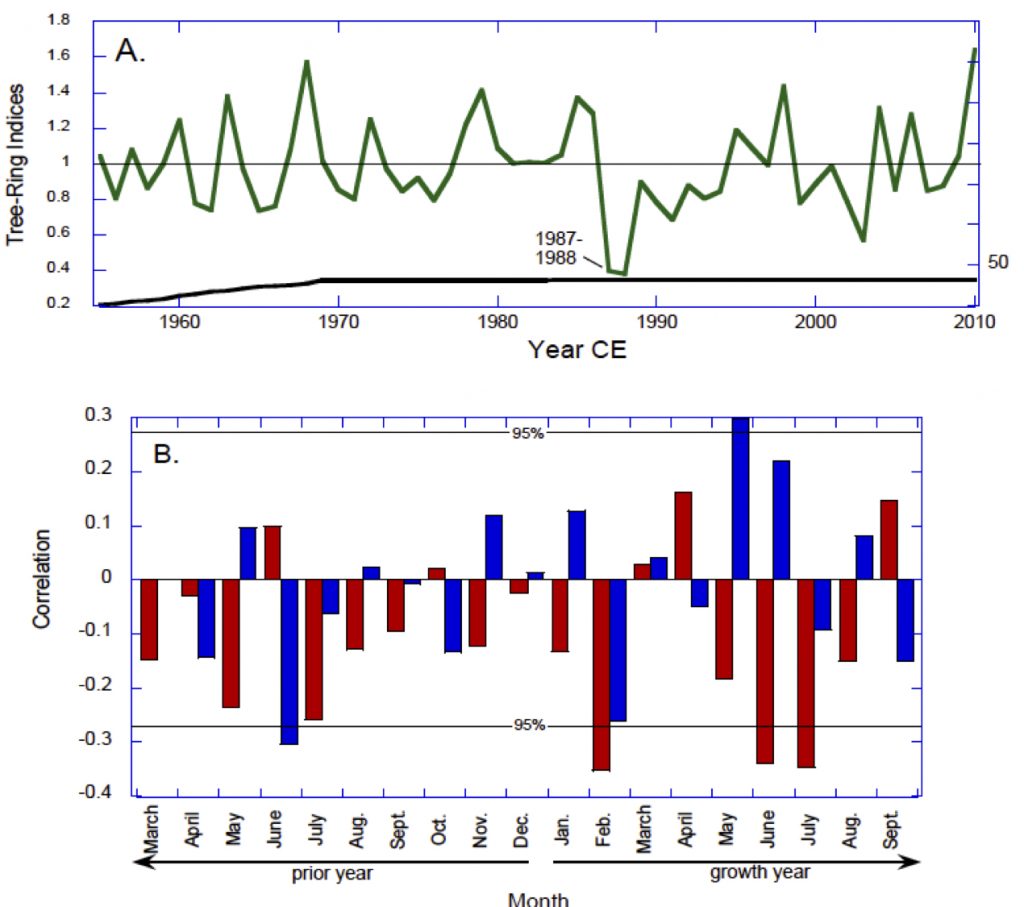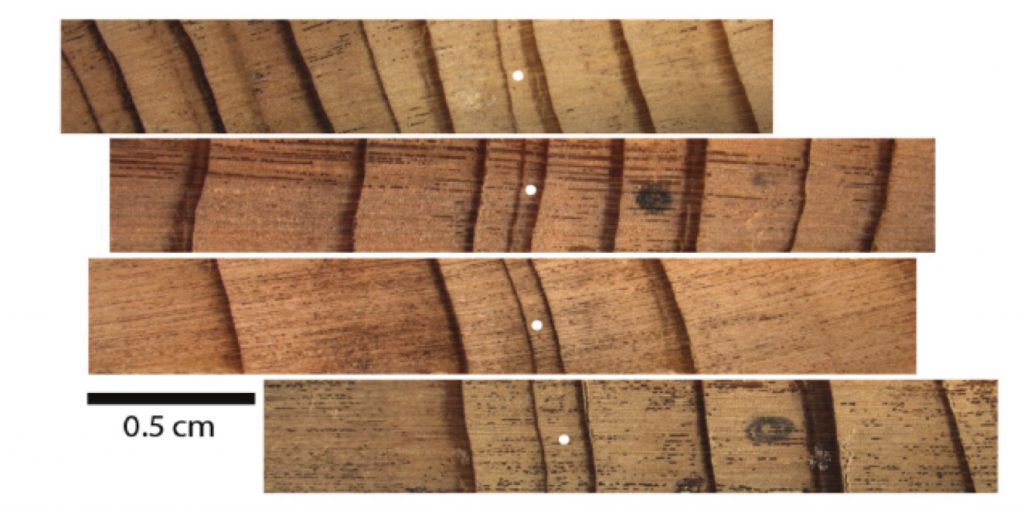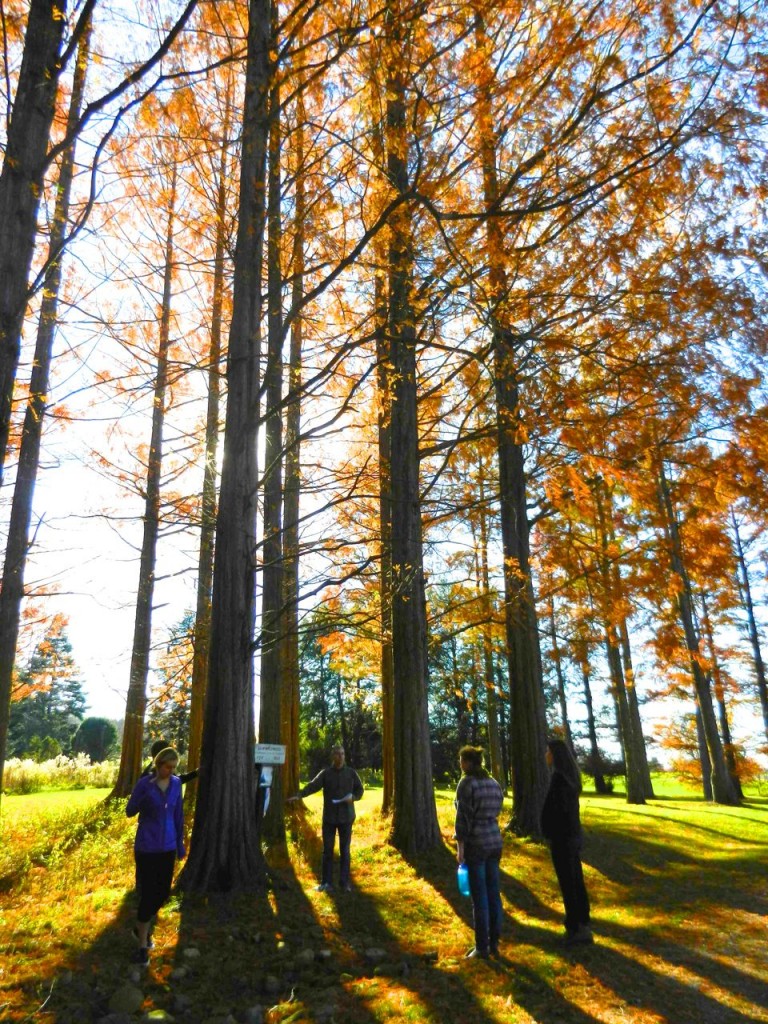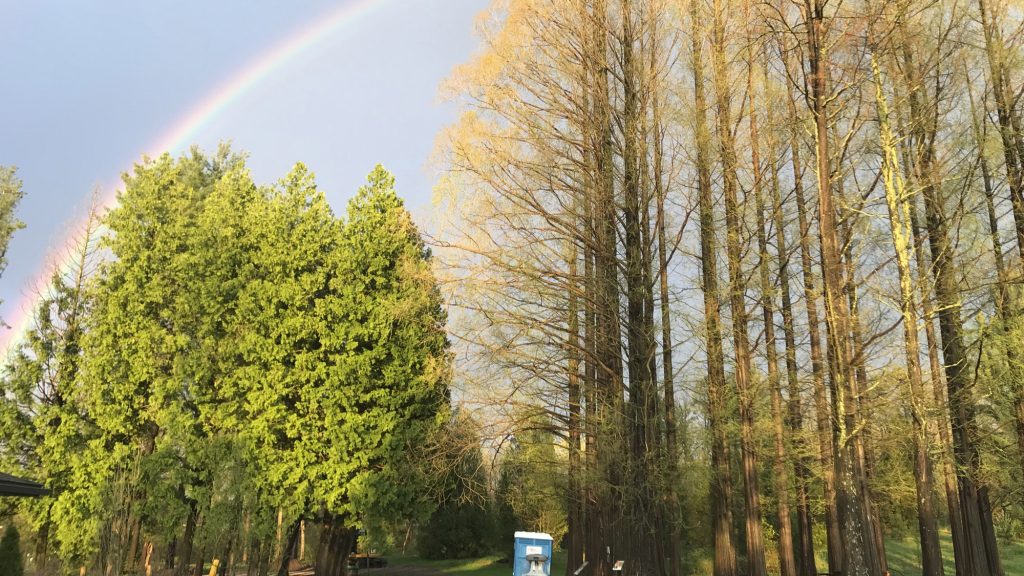The Wooster Tree Ring Lab has just published a paper with Franklin and Marshall College and The Ohio State University on the climate response of the Dawn Redwood tree. The study site is the beautiful Secrest Arboretum at the OARDC – OSU Wooster Campus. The upshot is that these remarkable and fast-growing trees are clearly doing well and as long as the increase in precipitation that Northeast Ohio is receiving keeps pace with the summer warming they should continue to do well. Why not plant more of these beautiful trees as they thrive, sequester carbon, and provide many other ecosystem services.
The senior author is Lauren Vargo, who is now a glaciologist research scientist at the Antarctic Research Centre in Wellington, Australia. Lauren did much of this work while an undergraduate at Wooster. Lauren is also the recent lead author on this Nature Climate Change contribution.
Here is the technical abstract of the Dawn Redwood paper:
ABSTRACT

Figure above shows the tree-ring record from a stand of 19 Dawn Redwood trees (upper panel A). The lower blue and red graph (B) is the climate response of the trees – temperature (red bars) is strongly negatively correlated with summer (June and July) temperatures and with February temperature. The summer relationship makes sense as hot summers require higher evapotranspiration demands. The negative correlation with winter is hypothesized to be linked to warming winters leading to less snow cover leaving roots exposed and vulnerable to damaging frosts. This negative relationship may go away as warming continues and frosts become less frequent.

Figure above shows three photos of cores from Dawn Redwood – note the narrow 1988 drought ring (white dots).
 The College of Wooster Paleoclimate class mulls around the Dawn Redwood stand.
The College of Wooster Paleoclimate class mulls around the Dawn Redwood stand.
 Another great photo of Dawn Redwoods – they are deciduous conifers so this photo in the early spring before growth.
Another great photo of Dawn Redwoods – they are deciduous conifers so this photo in the early spring before growth.
Many thanks to the Secrest Arboretum for permission to core these impressive trees. We greatly appreciate the support of Jason Veil the Curator of the Arboretum.
